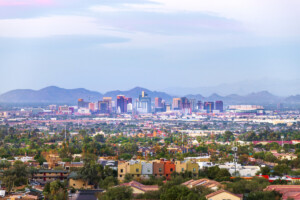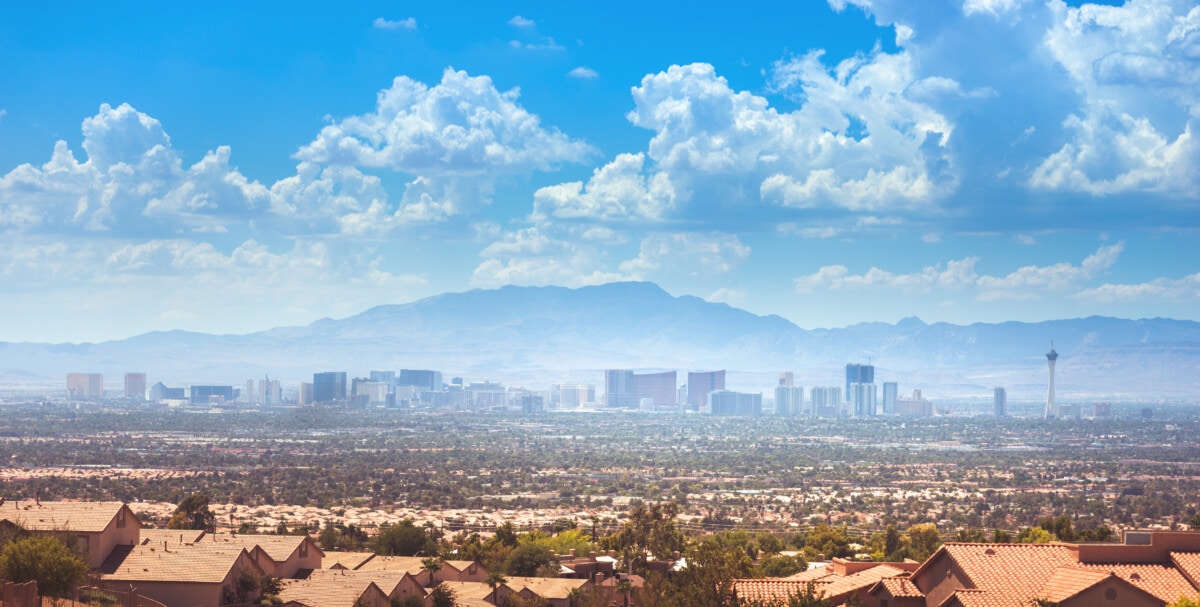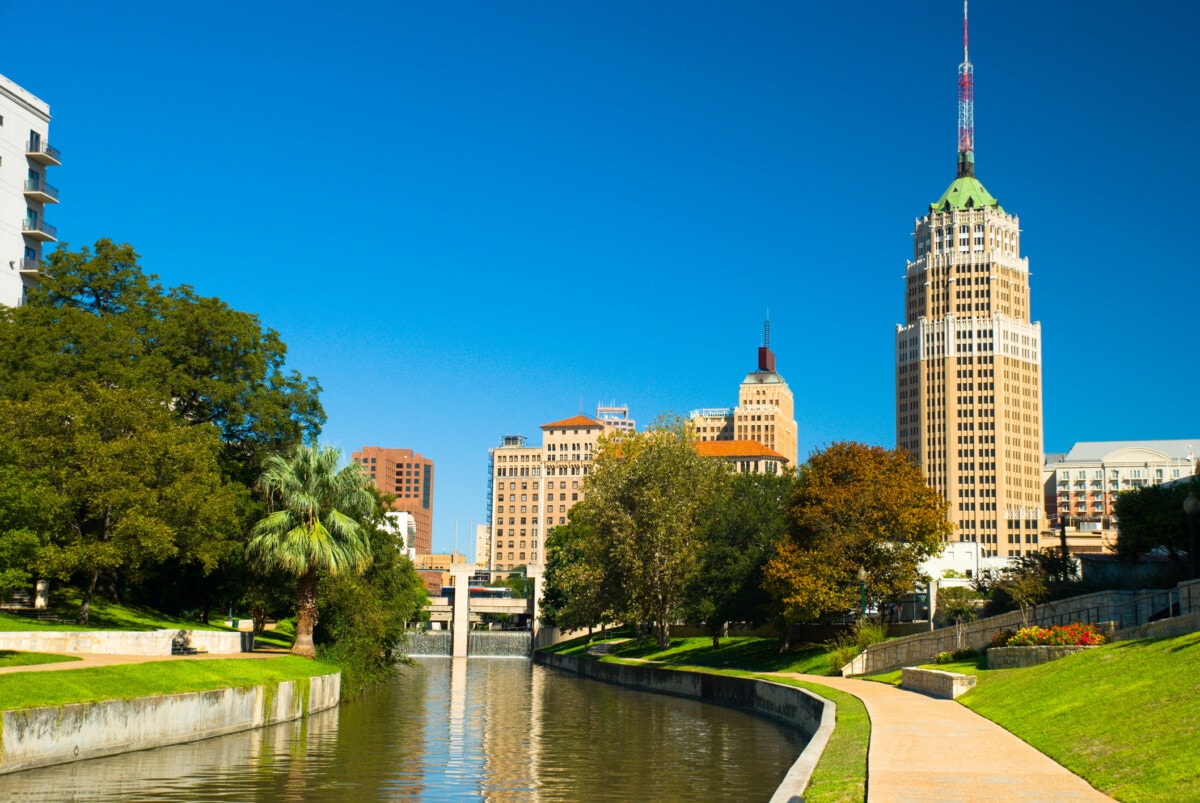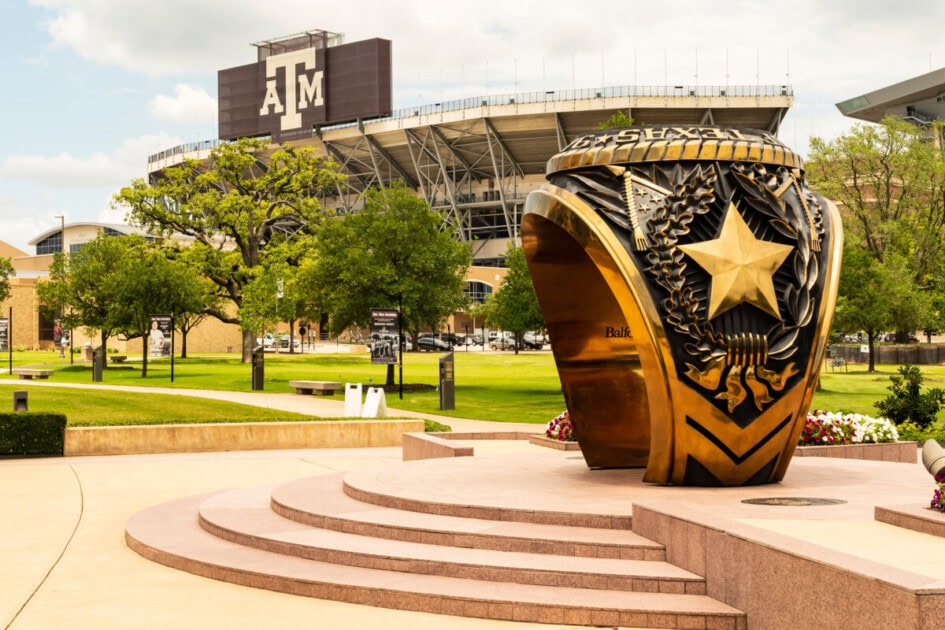Top 10 Hottest Cities in the U.S. by Temperature

2024 has been hot. Like, record-breaking hot. Heat waves have affected every corner of the country and led to a wild July, which clocked in as the hottest month ever. This isn’t a new trend, either; the ten warmest years on record have all occurred during the last decade.
That’s not to say that hot weather isn’t enjoyable. Heat can be a welcomed change from the gloomy cold and rain of the winter. Spending a day at the beach, sipping some lemonade, and adventuring in nature are all much more fun in the warm summer sun. But it’s important to be prepared.
So whether you like cool weather and are looking for places to avoid, or love it hot and sunny and want some recommendations, Redfin has compiled a list of the hottest cities in the U.S. to help. Read on to discover if one of them is right for you.
How we measure the hottest cities
For our purposes of determining the “hottest” cities, this list will measure a city’s average summer temperature. This way, we can account for cities that see very hot summers but also have cooler winters, instead of favoring tropical locations that are warm year-round. We will also be including a city’s average annual temperature, but won’t use it for ranking purposes.
An average summer temperature combines a city’s average daily high and low temperatures from June-August. An average annual temperature combines a city’s average daily high and low temperatures from January-December.
Keep reading to see Redfin’s rankings of the hottest cities in the U.S. with a population of 100,000 or more.
What are the hottest cities in the U.S.?

1. Phoenix, AZ
- Average summer temperature: 93.7°F
- Average annual temperature: 75.4°F
- Record highest temperature: 122°F (1990)
Phoenix is the hottest city in the U.S. due to its extreme summer temperatures. The city gets so hot because of its location in the rapidly warming Sonoran Desert, incredible amount of sunny days, and the urban heat island effect. And it’s getting warmer. The average daily summer temperature in 2023 was 95.2°F, well above the 30-year average.
Heat has been center stage and widespread this year. And as of mid-August 2024, Phoenix has experienced an unprecedented 87 consecutive days with temperatures reaching at least 100°F, breaking the previous record of 76 days set in 1993. This extreme heatwave is expected to continue into late August and likely beyond. Phoenix is also one of the fastest warming cities in the U.S., with nearly 80% of properties facing extreme heat risk.
This new reality is forcing the city to adapt to a new normal of unbearable summer heat. Some recent measures to adapt have included expanding the use of cool pavement – a reflective street coating that helps reduce surface temperatures – and improving Phoenix’s Urban Tree and Shade Program. The city aims to cover 25% of the city with shade by 2030, using increased tree planting to naturally cool the environment and enhance livability.
Phoenix homes for sale | Phoenix houses for rent | Phoenix apartments for rent

2. Yuma, AZ
- Average summer temperature: 92.8°F
- Average annual temperature: 75.9°F
- Record highest temperature: 124°F (1995)
Officially the sunniest city in the world, Yuma, AZ, is the second-hottest city in the U.S. Located in the heart of the Sonoran Desert, Yuma sees similar trends to Phoenix, with slightly hotter high temperatures and cooler low temperatures. The average summer low In Yuma is about 2°F cooler than Phoenix, which is why its daily average temperature is lower.
Yuma is also a bit more humid than other desert cities because it’s only 90 miles from the warm Gulf of California. This can make heat stress slightly worse.
Yuma is known for its agriculture, especially its lettuce and other summer vegetables that are difficult to grow in the winter. In fact, winters in Yuma are known for being sunny and pleasant, and the winter harvesting season is a beloved annual tradition.
Yuma homes for sale | Yuma houses for rent | Yuma apartments for rent

3. Las Vegas, NV
- Average summer temperature: 90.8°F
- Average annual temperature: 70.1°F
- Record highest temperature: 120°F (2024)
An entertainment oasis in the middle of the Mojave Desert, Las Vegas is the third-hottest city in the country. Temperatures in Las Vegas are slightly cooler than Phoenix and Yuma, primarily because it’s farther north. It still gets very hot, though, and it’s been warming rapidly, especially at night. An additional month of 100°F temperatures are anticipated by 2050.
People have been experiencing this heat firsthand, too. 2024 has been exceptionally hot for most of the Southwestern U.S., but especially so Las Vegas. Sin City saw seven consecutive days of high temperatures above 115°F and three days above 118°F, both records. A temperature of 120°F was recorded during the heatwave, which broke the all-time record by an astonishing 3°F.
Las Vegas has also seen remarkable growth in the past 20 years. In fact, the metro’s population has nearly doubled since 2000, in part because it has been a top migration destination for people searching for warm, sunny weather.
Las Vegas homes for sale | Las Vegas houses for rent | Las Vegas apartments for rent

4. McAllen, TX
- Average summer temperature: 88.5°F
- Average annual temperature: 77.4°F
- Record highest temperature: 111°F (2023)
McCallen is a melting pot of culture in the heart of the Rio Grande Valley. It’s also incredibly hot, boasting the hottest summers in Texas. McCallen gets so hot because of its southern latitude, proximity to the Chihuahuan Desert, and warming influence of the Gulf of Mexico. This makes humidity a major issue, compounding the effects of already extreme heat.
Like most cities, heat has been on display in McCallen in 2024. It began in Spring, with 115°F heat indexes (what the temperature actually feels like) in early May, and continued into July and August. The heat index reached a dangerous 124°F in July (100°F with 81% humidity), and remained very high in August.
Texas has warmed exceptionally quickly, with 2023 bringing the second-hottest year in the state’s history. 2024 is shaping up to be similarly hot. Relentless stretches of 100°F temperatures are common across the state and average temperatures sit 6-12°F above normal. In fact, in the past ten years, there have been 1,000 more days of record-breaking heat than in a typical decade.
McAllen homes for sale | McAllen houses for rent | McAllen apartments for rent

5. Laredo, TX
- Average summer temperature: 88.0°F
- Average annual temperature: 74.6°F
- Record highest temperature: 115°F (1908)
Situated along the banks of the Rio Grande, Laredo is the fifth-hottest city in the U.S. Laredo sees very similar temperatures to its southern counterpart, McCallen, but with less humidity and slightly cooler summers. Laredo’s location on the hot, dry plains leaves plenty of room for heat waves to take hold, though, and extremely hot temperatures are common.
Like many cities in Texas, Laredo saw a record-breaking summer in 2023, with July posting the hottest month in the city’s history. 2024 brought little relief.
Laredo homes for sale | Laredo houses for rent | Laredo apartments for rent

6. Brownsville, TX
- Average summer temperature: 86.4°F
- Average annual temperature: 76.2°F
- Record highest temperature: 106°F (1984/2023)
Brownsville, TX, is the sixth-hottest city in the country. Located on the warm Gulf Coast just north of Mexico and only a few hundred miles from Chihuahuan Desert, Brownsville benefits from both warm winters and hot summers. It’s more mild than many of the inland cities on the list, which is why it’s just number six.
Brownsville saw a record-hot year in 2023, with an especially hot summer. This warmth continued into 2024, with heat waves impacting the Rio Grande Valley in the spring and through the summer. The entire Gulf Coast baked for weeks, in part because the Gulf of Mexico has experienced record-high temperatures.
Record-hot ocean temperatures worldwide are part of the reason heat has been so extreme this year. A strong El Niño in the winter and spring also had a warming effect.
Brownsville homes for sale | Brownsville houses for rent | Brownsville apartments for rent

7. Tucson, AZ
- Average summer temperature: 86.4°F (100 average high)
- Average annual temperature: 69.7°F
- Record highest temperature: 117°F (1990)
Tucson, known as the Old Pueblo for its 10,000-year long native history, is the seventh-hottest city in the country. The city is situated in the Sonoran Desert and gets very hot, but it’s actually about five degrees cooler than Phoenix and sees nearly four more inches of rain. This is because the city sits about 1,500 feet higher in elevation and is nestled among five small mountain ranges. The fall and spring are the best times to experience the city’s beauty.
Summer monsoons are common, and heat waves can be long and dangerous. In July 2024, Tucson logged two record-breaking days in a row, reaching 111 and 112. However, heat in Tucson is generally less dangerous than cities in the Salt River Valley to the north.
Tucson homes for sale | Tucson houses for rent | Tucson apartments for rent

8. San Antonio, TX
- Average summer temperature: 85.4°F
- Average annual temperature: 71.1°F
- Record highest temperature: 111°F (2000)
San Antonio is the eighth-hottest city in the country. The city is so hot because of its flat landscape, proximity to the warm and humid Gulf Coast, and heat waves from Mexico. The urban heat island effect is also a major factor.
San Antonio’s heat has been on display this year. The heat began in earnest in May, when the city saw a week of 95°F+ days. Then, in June, the heat index reached 117°F for an all-time record. San Antonio managed to escape more excessively hot temperatures until August, when a record-breaking heatwave pushed temperatures past 100°F for a week.
So far, this year’s heat doesn’t stack up to 2023, though, which saw 75 days above 100°F and will likely become the norm in the near future. 100 degree days are now three-times more common than they were 30 years ago.
San Antonio homes for sale | San Antonio houses for rent | San Antonio apartments for rent

9. College Station, TX
- Average summer temperature: 84.5°F
- Average annual temperature: 69.4°F
- Record highest temperature: 112°F (2000)
College Station, located between Austin, Waco, and Houston, has a fairly similar climate to all three cities. It’s less humid than Houston, a bit hotter than Austin, and further south than Waco, giving it the number nine spot. Heat from the Gulf of Mexico and Mexico proper provide most of the heat, made worse by frequent southerly winds. The flat landscape means heat has no trouble flowing in.
As with most other Texas cities, August 2024 was very hot. Heat indexes of 110°F led to heat warnings and advisories for a lot of the month.
College Station homes for sale | College Station houses for rent | College Station apartments for rent

10. Dallas, TX
- Average summer temperature: 84.5°F
- Average annual temperature: 68.0°F
- Record highest temperature: 113°F (1980)
Adjacent to Fort Worth, Dallas is known for its football, cowboy culture, and great barbecue. It’s also a very hot city. The heat comes from southerly winds from Mexico and the Gulf, leading to wet, muggy air that central and southern Texas is known for.
The summer of 2023 was record-breaking. 2024 has been hot, but not nearly as hot. So far this year, the city has reached 94°F in February, a daily record, and matched historic highs in June. An August heatwave was even hotter, mirroring trends seen across the southern U.S.
Dallas homes for sale | Dallas houses for rent | Dallas apartments for rent
What is the hottest place in the U.S.?
Death Valley National Park is the hottest place in the U.S. The desert basin has an average summer temperature of 101.3°F (which includes low temperatures) and an average summer high of 114.8°F. And recently, the average temperature in July 2024 was 108.5°F – the hottest month ever recorded.
Not only is Death Valley the hottest place in the country, but it’s also seen the hottest temperatures on earth. The national park hit 134.0 degrees in 1913, which is recognized as the hottest temperature in history (although this has been disputed). It’s also seen the world’s second-hottest temperature of 130 degrees in 2021 (unverified), along with several similar highs recently.
The reason the desert gets so hot is because it sits around 280 feet below sea level and has some of the highest barometric pressure in the world. Higher pressure leads to more energy, which results in hotter air. The nearby mountains also trap the air, acting as a furnace.
How are temperatures changing?
2023 was the hottest year in history, and the past 14 months have been the hottest on record, capped off by a historic July. The effects of this heat have been widespread, often in the form of intense, long-lasting heat waves – the deadliest form of extreme weather.
Due to global warming and climate change, research shows that temperatures will get hotter more frequently across the globe, including the U.S., which will likely make some locations uninhabitable to humans within the next 50-80 years without extreme reductions in greenhouse gas emissions.
Tropical areas and places closer to warm water are most at risk of unbearable heat due to their higher humidity, which leads to extremely high heat indexes. This is why Southeastern and Eastern U.S. cities have the highest heat risks in the country. The Southwest isn’t far behind, either. In fact, 100% of properties in every city on this list have a major or greater heat risk.
Methodology
This list contains average annual temperature data for major cities with over 100,000 residents.
Data comes from the National Centers for Environmental Information (NCEI) and its parent administration, the National Oceanic and Atmospheric Administration (NOAA). Average summer temperatures are a three-month average based on data from June-August 1991-2020. Average annual temperatures are a twelve-month average based on data from 1991-2020.
The post Top 10 Hottest Cities in the U.S. by Temperature appeared first on Redfin | Real Estate Tips for Home Buying, Selling & More.
